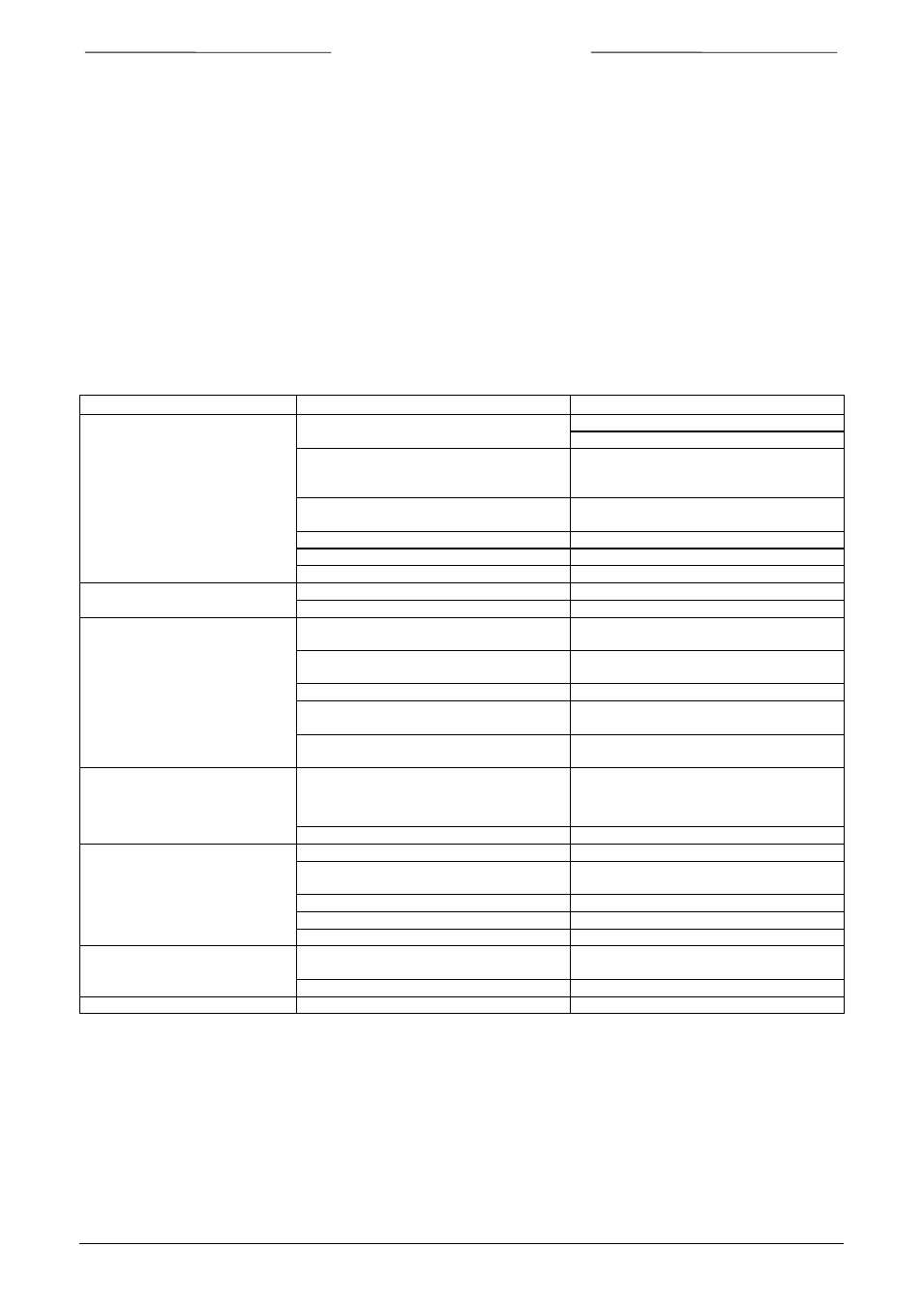6 troubleshooting, 1 general, 2 troubleshooting summary – Bronkhorst EX-FLOW Mass Flow User Manual
Page 23

BRONKHORST HIGH-TECH B.V.
6 TROUBLESHOOTING
6.1 General
For a correct analysis of the proper operation of a mass flow meter/controller it is recommended to remove
the unit from the process line and to check it without applying gas supply pressure. In case the unit is dirty,
this can be ascertained immediately by loosening the compression type couplings and, if applicable, the
flange on the inlet side.
Energizing or de-energizing of the instrument may already indicate whether there is an electronic failure.
After that gas pressure is to be applied in order to check flow behaviour.
If there should be suspicion of leakage do not check for bubbles with a leak detection liquid as this may lead
to a short-circuit in the sensor capillary assembly or p.c. board.
6.2 Troubleshooting summary
Symptom
Possible cause
Action
No output signal
No power supply
1a) check power supply
1b) check cable connection
Output stage blown-up due to long
lasting shortage and/or high-voltage
peaks
1c) return to factory
Supply pressure too high, or differential
pressure across meter too high
1d) lower supply pressure
Valve blocked/contaminated
1e) return to factory
Screen in inlet fitting blocked
1f) return to factory
Sensor/capillary failure
1g) return to factory
Maximum output signal
Output stage blown-up
2a) return to factory
Sensor/capillary failure
2b) return to factory
Output signal much lower than
setpoint signal or desired flow
Screen blocked/contamined
3a) return to factory
LFD blocked/contaminated and/or liquid
in meter
3b return to factory
Valve blocked/contaminated
3c) return to factory
Valve internals damage (swollen seat in
plunger)
3d) return to factory
Incorrect type of gas is used and/or
pressure/diff. pressure
3e) try instrument on conditions for which
it was designed
Flow is gradually decreasing
Condensation, occurs with
NH
3
,
hydrocarbons such as
C H ,C H
3 8
4 10
etc.
4a) decrease supply pressure and/or
heat gas to be measured
Valve adjustment has changed
4b) see ‘1e’
Oscillation
Supply pressure/diff. pressure too high
5a) lower pressure
Pipeline too short between pressure
regulator and MFC
5b) increase length or diameter of piping
upstream
Pressure regulator is oscillating
5c) replace pressure regulator or try ‘5b’
Valve sleeve or internals damaged
5d) return to factory
Controller adjustment wrong
5e) return to factory
Small flow at zero setpoint
Valve leaks due to damaged plunger or
dirt in orifice
6a) return to factory
Pressure too high or much too low
6b) apply correct pressure
9.17.028
page 23
